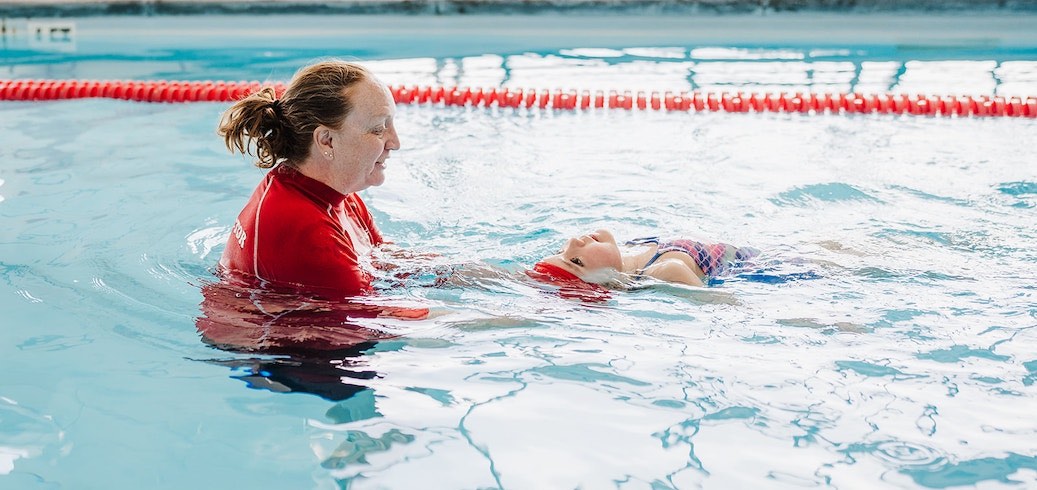Basic Survival Swimming Skills Everyone Should Know

According to the Centers for Disease Control and Prevention, drowning is the leading cause of accidental death for children ages 1-14, with children ages 1-4 at the highest risk. Fortunately, most drownings are preventable with the necessary water survival skills!
What is Survival Swimming?
Survival swimming teaches the basics of floating and breathing for an extended time. In an emergency, it’s these skills that allow a distressed swimmer to breathe without obstruction or difficulty, and yell out for help if they are unable to swim to safety or rest until they’re able to resume swimming.
Here are five of the most crucial skills:
- Safe Entry and Exit Using the Wall. Swimmers often jump or fall into the water when there are no ladders or stairs for easy exit. To prevent panic and improve safety, swimmers should know how to safely enter and exit the pool without relying on a ladder or stairs.
- Float or Tread Water. Floating is the first skill a new swimmer should master. Floating is a low-energy way to stay above water for an extended time, and it allows a swimmer to rest and then continue to swim or call for help.
- Rise to the Surface. All swimmers should learn to enter water that is over their heads and return to the surface.
- Front to Back Rollover. All swimmers should know how to roll over from front to back and float independently. If a swimmer falls into the water or gets into a situation where they are extremely fatigued, they must know how to roll over on their backs to rest and catch their breath.
- Swim 25 Yards to Safety. In many cases, the ability to swim 25 years allows a swimmer to propel themselves to the closest wall, or in the case of an open water incident, the shore, where they can either climb out of the water or rest and call for help.
Our Approach to Survival Swimming Lessons
We have over 40 years of experience teaching swimmers from age 3-months to adults.
Our curriculum focuses on survival skills first before progressing to stroke techniques. Why? Our swimmers must have the skills to survive in the water before we teach them to swim. A strong baseline of water survival skills builds the foundation for safety!
We continue to incorporate and reinforce survival skills as swimmers advance through our program and progress to more advanced lesson levels. Doing so ensures that their survival skills stay sharp, and safety is always at the forefront!
